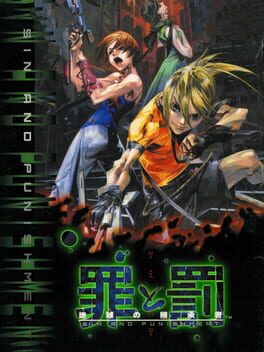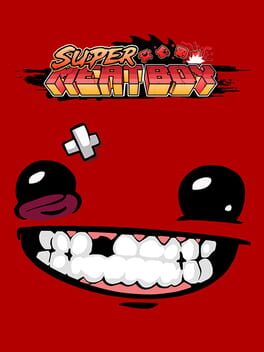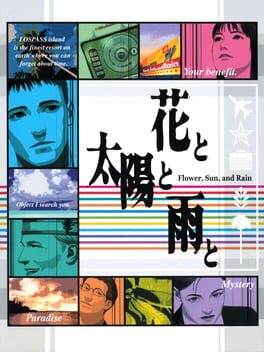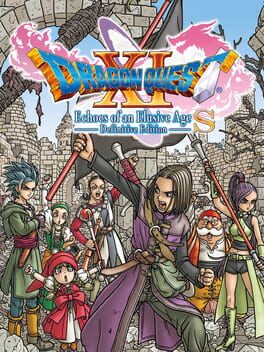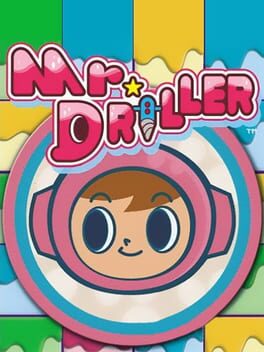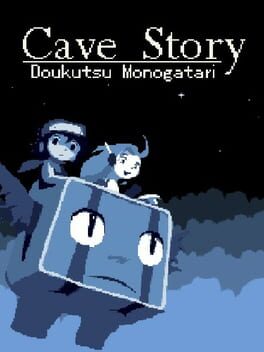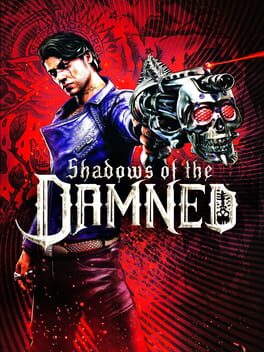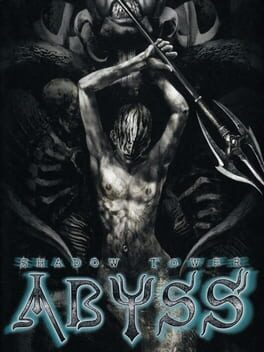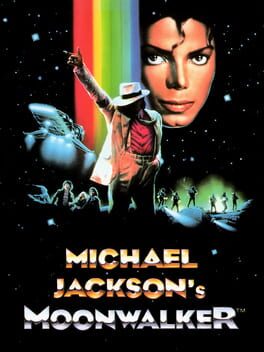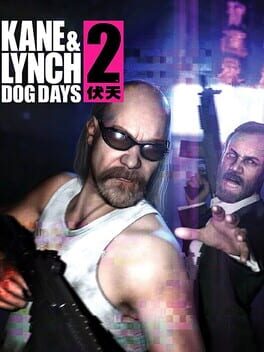2416 Reviews liked by Ardwyw_mp3
Sin and Punishment
2000
I think what makes sin & punishment so great — other than the exhilaratingly snappy paced set piece monster sandwich of a campaign, killer soundtrack, and pristine level design paired with a borderline sexual difficulty curve — is that it's the perfect crystallized representation of the core elements of the "shooter game"
Anyone whos played a shmup, run & gun, FPS or TPS knows these games are made up of two core elements. Move to avoid getting hit, line yourself or your reticule up with the enemy and press the shoot button to win. Move and shoot.
What makes S&P stand in contrast to its contemporaries is that there's virtually zero interplay between these two aspects. Moving doesn't affect your aiming (considerably) and aiming has no effect on the camera or your movement.
This disconnect between the two elements ends up creating a unique appeal where you're essentially playing two different games at the same time, a 3D shooting gallery and a 2D "dodge em up".
This inherent multitasking element plus the set camera let the designers create deliciously demanding scenarios like having to focus your aim on a mobile enemy in the top right while noting the missile arriving from the bottom left in your peripheral vision and making a bet with yourself that you'll reflect it without ungluing your eyes from the top right.
Were this a standardized FPS/TPS, the dynamic camera and 3D movement wouldn't afford the same level of clarity or precision that allows S&P's obstacles to be as tight & demanding as they are.
Were this a shoot em up, you'd have the clarity and precise movement but the (generally) restrictive way that shooting works doesn't allow for the multi tasking element to emerge.
This isn't either of those things though. It's straight up moving and shooting at its rawest and most literal. It's Sin & Punishment all the way through, baby.
Anyone whos played a shmup, run & gun, FPS or TPS knows these games are made up of two core elements. Move to avoid getting hit, line yourself or your reticule up with the enemy and press the shoot button to win. Move and shoot.
What makes S&P stand in contrast to its contemporaries is that there's virtually zero interplay between these two aspects. Moving doesn't affect your aiming (considerably) and aiming has no effect on the camera or your movement.
This disconnect between the two elements ends up creating a unique appeal where you're essentially playing two different games at the same time, a 3D shooting gallery and a 2D "dodge em up".
This inherent multitasking element plus the set camera let the designers create deliciously demanding scenarios like having to focus your aim on a mobile enemy in the top right while noting the missile arriving from the bottom left in your peripheral vision and making a bet with yourself that you'll reflect it without ungluing your eyes from the top right.
Were this a standardized FPS/TPS, the dynamic camera and 3D movement wouldn't afford the same level of clarity or precision that allows S&P's obstacles to be as tight & demanding as they are.
Were this a shoot em up, you'd have the clarity and precise movement but the (generally) restrictive way that shooting works doesn't allow for the multi tasking element to emerge.
This isn't either of those things though. It's straight up moving and shooting at its rawest and most literal. It's Sin & Punishment all the way through, baby.
Super Meat Boy
2010
At the time of its international release, the critical reception of Flower, Sun, and Rain was probably justified; the core gameplay loop isn't traditionally engaging and as a standalone work it's story makes little to no sense.
But in 2020, where fans have realised that numerous titles Suda51 worked on are actually thematically and narratively interconnected, an unofficial series of games dubbed "Kill The Past", it's clear that Flower, Sun, and Rain is actually the sequel to Grasshopper Manufactures inaugural outing: The Silver Case.
Going in with The Silver Case fresh in my mind, I can easily say that engrossing, entertaining and esoteric writing continues to make me enjoy games that I would have likely never played otherwise due to the genres they inhabit (visual novels and walking sims respectively).
Not to mention the design choice to technically give the player all the answers to every single puzzle in the game in the form of The Lospass, an in-game guidebook that Sumio Mondo (the protagonist) is given during the second chapter, is actually the most ingenious move I've ever seen.
It's good. Play it.
But in 2020, where fans have realised that numerous titles Suda51 worked on are actually thematically and narratively interconnected, an unofficial series of games dubbed "Kill The Past", it's clear that Flower, Sun, and Rain is actually the sequel to Grasshopper Manufactures inaugural outing: The Silver Case.
Going in with The Silver Case fresh in my mind, I can easily say that engrossing, entertaining and esoteric writing continues to make me enjoy games that I would have likely never played otherwise due to the genres they inhabit (visual novels and walking sims respectively).
Not to mention the design choice to technically give the player all the answers to every single puzzle in the game in the form of The Lospass, an in-game guidebook that Sumio Mondo (the protagonist) is given during the second chapter, is actually the most ingenious move I've ever seen.
It's good. Play it.
This review contains spoilers
TL;DR: The third act ruins what was looking to be a near-perfect game.
For once, a Dragon Quest game ended on a bittersweet note. The world's been saved, but at what cost? Your hometown is a pile of rubble that now acts as a literal Last Bastion for the people that once lived there and, most importantly, a vital member of your party gave their life to save those she cared about the most.
Instead of leaving on that and letting the player roam the broken world in the post-game, looking for answers about their ancestry and the role they play in the world or testing their mettle against ancient evils that are even stronger than the second act's final boss, you discover that there has been a method to travel through time the entire game and immediately bounce to an alternate timeline before the ending events of the first act.
And with that, all the interesting character development from the second act is gone.
Without his sacrifice, Erik doesn't lose his memories.
He doesn't open up to the party about his younger sister Mia and the tragic events that unfurled prior to the events of the main game. If you decide to visit their hideaway during the third act, the Luminary just magically removes the Midas-esque curse that was placed on her and the two happily reunite.
Without the death of Veronica, Serena has no reason to ritualistically cut her hair and grow as a person, bonding with her sister's soul and unlocking an expanded skillset that makes her an essential party member when tackling any challenge the second act threw at you.
Without witnessing Jasper's betrayal and the fall of Yggdrasil, Hendrik isn't lauded as the Hero and the protector of the Last Bastion. He has no reason to have the Luminary prove himself in the defence of his hometown and pledge himself as their sworn protector once he comes to terms with his wrongdoings and the power that the Luminary holds.
Outside of the narrative qualms I had with the third act, I fucking loved DQXI. I felt like a kid again, embarking on a comfy adventure in a beautiful world with my little ragtag group of friends.
Oh and the music sucks, with little to no variety in regards to tracks and compositions that you'd expect to come from Sugiyama's understudy and not the man himself.
An easy all-time-great had the post-game/third act been different.
For once, a Dragon Quest game ended on a bittersweet note. The world's been saved, but at what cost? Your hometown is a pile of rubble that now acts as a literal Last Bastion for the people that once lived there and, most importantly, a vital member of your party gave their life to save those she cared about the most.
Instead of leaving on that and letting the player roam the broken world in the post-game, looking for answers about their ancestry and the role they play in the world or testing their mettle against ancient evils that are even stronger than the second act's final boss, you discover that there has been a method to travel through time the entire game and immediately bounce to an alternate timeline before the ending events of the first act.
And with that, all the interesting character development from the second act is gone.
Without his sacrifice, Erik doesn't lose his memories.
He doesn't open up to the party about his younger sister Mia and the tragic events that unfurled prior to the events of the main game. If you decide to visit their hideaway during the third act, the Luminary just magically removes the Midas-esque curse that was placed on her and the two happily reunite.
Without the death of Veronica, Serena has no reason to ritualistically cut her hair and grow as a person, bonding with her sister's soul and unlocking an expanded skillset that makes her an essential party member when tackling any challenge the second act threw at you.
Without witnessing Jasper's betrayal and the fall of Yggdrasil, Hendrik isn't lauded as the Hero and the protector of the Last Bastion. He has no reason to have the Luminary prove himself in the defence of his hometown and pledge himself as their sworn protector once he comes to terms with his wrongdoings and the power that the Luminary holds.
Outside of the narrative qualms I had with the third act, I fucking loved DQXI. I felt like a kid again, embarking on a comfy adventure in a beautiful world with my little ragtag group of friends.
Oh and the music sucks, with little to no variety in regards to tracks and compositions that you'd expect to come from Sugiyama's understudy and not the man himself.
An easy all-time-great had the post-game/third act been different.
Mr. Driller
1999
Cave Story
2004
came dressed in black ready to mourn immense creative stifling by the casual, profit-driven tyranny of western publishers, stayed for akira yamaoka's godlike score and for the comic and raunchy but often unrealized attempts to jab at the medium's hypermasculine paragons
if you haven't read kurayami dance and have any interest in suda or in this game's behind-the-scenes progression from kafkaesque horror to b-movie grindhouse romp, id highly suggest you do because it's insane how much of the language and iconography of that manga (itself a conceptual iteration on kurayami, a separate project that never saw realization, and the initial vision suda had for SOTD prior to ea's chokehold on creative direction) is reflected here; the manga presents a lovely middle ground between the two diametrically opposed visions at the core of SOTD's inception. shared in common are the ideas of an easy ride-influenced road trip, a talkative otherworldly companion, a journey through supernatural planes of existence, a mysterious castle separate from the general populace, and a few other smaller commonalities. still, SOTD opts for a much less thematically complete endeavour (with its sardonic and satirical throughlines of male insecurity as it relates to female sexuality feeling largely uninterrogated), and considering the pedigree behind the project it's shocking the gameplay really isn't up to snuff at all either, so it's harder to enjoy as just a thrilling and cheesy adventure. mikami somehow turned in a dull third person shooter with finicky controls and mechanics that trivialize the vast majority of the combat scenarios
it's difficult to fault any of this - reading kurayami dance, one gets the sense that suda wanted to make something more in line with flower, sun, and rain again and simply couldn't because EA didnt see those ideas as trendy or appealing to western markets - but it's a shame the end result is a poor experience that appealed to no one if sales data is anything to go by, that hasn't aged especially gracefully, and that games criticism of its era struggled to sum up, reconcile with, or effectively assess. the most common criticism was so of its time it almost hurts - the lack of a new game+ feature. no discussion of narrative, stilted mechanics, corporate meddling, what have you. just a run of the mill release to throw into the 7/10 pile and forget.
of the titles suda had a hand in in the early 2010s, produced in his absence from the director's seat, this is probably my second favourite, but it's really not saying much. there's interesting insight from the development of killer is dead that showcases yet more publisher strangulation - the implementation of gigolo mode, mandated by kadokawa. what's interesting here is that, commenting on gigolo modes inclusion, suda explicitly acknowledged that these features would probably harm grasshoppers reputation, especially when taken in conjunction with both this game and no more heroes 2, but there wasn't much he could do about it. that lack of control speaks volumes about the experiences on offer, and SOTD is the poster boy for that fraught process. playing through the game, i can say that as interesting as it could be at times? thank god that eras over and that grasshopper is moving on to self-publishing. at this rate, you'd be better off reading kurayami dance and playing travis strikes again than trying your hand at SOTD, both of which are more interesting to experience, are far more emotionally affecting, and reflect on this title in interesting ways. dissociative identity might be a trademark of sudas works, but it's always bleak when the game itself is undergoing an overt identity crisis
if you haven't read kurayami dance and have any interest in suda or in this game's behind-the-scenes progression from kafkaesque horror to b-movie grindhouse romp, id highly suggest you do because it's insane how much of the language and iconography of that manga (itself a conceptual iteration on kurayami, a separate project that never saw realization, and the initial vision suda had for SOTD prior to ea's chokehold on creative direction) is reflected here; the manga presents a lovely middle ground between the two diametrically opposed visions at the core of SOTD's inception. shared in common are the ideas of an easy ride-influenced road trip, a talkative otherworldly companion, a journey through supernatural planes of existence, a mysterious castle separate from the general populace, and a few other smaller commonalities. still, SOTD opts for a much less thematically complete endeavour (with its sardonic and satirical throughlines of male insecurity as it relates to female sexuality feeling largely uninterrogated), and considering the pedigree behind the project it's shocking the gameplay really isn't up to snuff at all either, so it's harder to enjoy as just a thrilling and cheesy adventure. mikami somehow turned in a dull third person shooter with finicky controls and mechanics that trivialize the vast majority of the combat scenarios
it's difficult to fault any of this - reading kurayami dance, one gets the sense that suda wanted to make something more in line with flower, sun, and rain again and simply couldn't because EA didnt see those ideas as trendy or appealing to western markets - but it's a shame the end result is a poor experience that appealed to no one if sales data is anything to go by, that hasn't aged especially gracefully, and that games criticism of its era struggled to sum up, reconcile with, or effectively assess. the most common criticism was so of its time it almost hurts - the lack of a new game+ feature. no discussion of narrative, stilted mechanics, corporate meddling, what have you. just a run of the mill release to throw into the 7/10 pile and forget.
of the titles suda had a hand in in the early 2010s, produced in his absence from the director's seat, this is probably my second favourite, but it's really not saying much. there's interesting insight from the development of killer is dead that showcases yet more publisher strangulation - the implementation of gigolo mode, mandated by kadokawa. what's interesting here is that, commenting on gigolo modes inclusion, suda explicitly acknowledged that these features would probably harm grasshoppers reputation, especially when taken in conjunction with both this game and no more heroes 2, but there wasn't much he could do about it. that lack of control speaks volumes about the experiences on offer, and SOTD is the poster boy for that fraught process. playing through the game, i can say that as interesting as it could be at times? thank god that eras over and that grasshopper is moving on to self-publishing. at this rate, you'd be better off reading kurayami dance and playing travis strikes again than trying your hand at SOTD, both of which are more interesting to experience, are far more emotionally affecting, and reflect on this title in interesting ways. dissociative identity might be a trademark of sudas works, but it's always bleak when the game itself is undergoing an overt identity crisis
Dark Souls
2011
Super Mario 3D World
2013
Shadow Tower: Abyss
2003
Resident Evil 4
2005
The ideal videogame: A expertly crafted grindhouse epic that revolutionized action and horrorgames and presents some of the best stretched of gamedesign I've seen in a game. This reaches it’s peak in the absurd castle-segment where the game delivers a series of perfect enemy encounters and set-pieces. It also can’t be overstated how good the escourt mission is implemented, simply following a concrete set of rules (stand behind while you shoot, waits or runs on commando, can hide dumpsters in most arenas) instead of letting an underprogammed AI do the job. Also the only horrorgame where roundhouse kicks and suplexes are a vital tool for survival.
This may sound like a joke, but the closest point of comparison I can make for this game is Devil May Cry. On the surface it’s just a generic “collect all the items” platformer, but there’s an unobvious level of nuance that can make Moonwalker feel like a proto action game. New players will just walk around and do basic attacks as usual, but expert players can chain hat throws after stylish aerial spins to fluidly clear obstacles and defeat multiple enemies at the same time. However, the magic meter spent on these fancier attacks and your health are one in the same, so you have to strike a balance between offence and defense. There’s also room for showing off, where moonwalking requires the attack button to be held, diminishing your ability to react to new enemies in favor of looking cool. It’s reminiscent of managing Devil Trigger, Devil May Cry’s main source of healing and burst damage, which requires players to get in enemies’ faces and do taunts to build up, wordlessly guiding players to the most exciting playstyle possible. The best way to play both of these games is in a stylishly risky way, even when Moonwalker’s implementation is rudimentary by comparison. It may be bland when played like a normal platformer, but it becomes enjoyable when you start mapping out the stages, planning how to style over obstacles, and routing magic usage to make each level a choreographed performance. Of course, I don’t mean to imply that this game deserves to be labeled one of the greats, but it does have some neat ideas that go unappreciated because it’s just seen as a joke. Michael Jackson’s pop cultural relevance is the lowest it’s been since 1969 (I’m serious, that’s when Want You Back came out) and the game’s been riffed on by every critic in history, but that just highlights how fun it can be to approach games with an open mind. Even the weirdest games can have something to love, or interesting connections to your other favorites.
Astro's Playroom
2020
Ironically, the gameplay reminded me more of Nintendo's Mario than anything else, but it still succeeds as a fun, nostalgic playable ad for all things Playstation. Its dazzling display of the PS5's "haptic features" makes this something of a rites of passage for all new users to the console.
And any game that features a Silent Hill reference is good in my book 👍
And any game that features a Silent Hill reference is good in my book 👍
Super Mario Sunshine
2002
I had heard that this game could present a lot of jankiness. It's true, this game's particular feel and physics are more prominent than 64's, but I think it's the same aim this previous game has: making difficult for the player to have an absolute control over the avatar, Mario. The main goal is to create accidents as interesting as victories, and as far as I've seen, it really works. For me at least.
I just found fascinating how one shine could lend to soo many different outcomes.
I just found fascinating how one shine could lend to soo many different outcomes.
